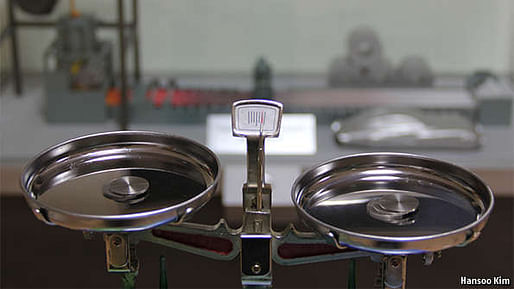

By manipulating the structure of steel on a nanometre scale, [Hansoo Kim and his colleagues at the Pohang University of Science and Technology in South Korea] (have) produced a material which has the strength and the lightness of titanium alloys but will, when produced at scale, cost a tenth as much. — The Economist
The new, potentially-revolutionary alloy utilizes nickel, in addition to aluminum and iron, to create a metal that is as strong as steel but much lighter and cheaper. The scientists created the alloy using nanotechnology to manipulate the structure of steel on a minute level.
Noting the decrease in steel-usage over the last decade, the scientists hope the new alloy could fill that market, potentially being used for cars as well as even aircrafts. Any ideas on how a lightweight, strong and cheap steel could be utilized architecturally?
5 Comments
Paywall so couldn't read it - but did it say why it's cheaper? I always thought nickel and aluminum cost more than iron.
Cheaper than titanium.
Because I'm a dilettante materials geek with a love for metal (my father is a metallurgist), I read this and read all the comments and loved this one:
From the material entropy point of view the inter-crystal corrosion may be interesting phenomenon to observe. I noticed that some wheel rim alloys on tyres inflated by NO2 show accelerated rate of corrosion at boundary layers. On Stainless hulls I recorded the high cost of repairs and mending corrosion caused by inter-crystal valent fatigue not just between skin and frame. The electro-corrosion would be great field of research for industry to struggle with just call it a progress from Blacksmith point of view.
That level of knowledge - about ANY topic - makes me giddy with delight. We touched on it in the podcast last week: architects are such generalists that I feel we tend to love talking with people who have an incredibly deep understanding of one very narrow, specialized thing.
To answer your question, Nicholas: I'm guessing this material could toss the 1/3 ratio for cantilevers out the (incredibly narrow-framed, large-paned) window?
I think we're talking about incremental improvements here. Thus the focus on transportation (weight reduction).
I got into a far-too-scientific email conversation with my father the metallurgist over the makeup, properties, and potentials for this new metal. I hope I'm not misrepresenting him when I say this: I believe this is his comment on how this metal would perform:
It would be very bendable at room temperature and snap back to its original shape, but would have to be heated to very high temperatures to be formed into a new shape.
So I'm seeing applications for phase-changing materials, maybe? Skins that deform to allow more or less insulation depending on outdoor temperature, for example? Or maybe safety applications, like those bollards that protect against car bombs, but on a human scale - so security barriers that don't *look* like bars or grids, that can take a hit and snap back into some lovely previous shape?
Block this user
Are you sure you want to block this user and hide all related comments throughout the site?
Archinect
This is your first comment on Archinect. Your comment will be visible once approved.